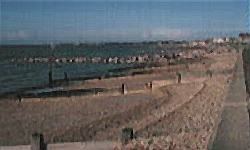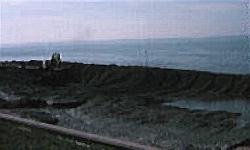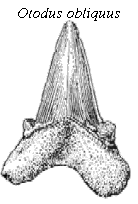Death of a Fossil Site
By Gary Morse, Southampton, UK
An act of official vandalism and destruction of a Site of Special Scientific Interest (SSSI)
Some of you may be familiar with the coastal site at Lee-on-the-Solent, Hampshire, England. This site is an important Middle Eocene exposure and famous for the variety of fossils that can be found. Such is the importance of this site that it was confirmed as an SSSI by English Nature on May 21, 1993.
This site has now been destroyed by Gosport Borough Council. They have completely covered the exposure with large limestone blocks and backfilled with gravel dredged from the Solent at a total cost of £4,000,000. The excuse is to minimise coastal erosion, but significant erosion has not been a problem along the coast here. What erosion there was would expose the beds that were of interest and other methods could have been employed. Thanks to these bureaucrats we are now no longer able to preserve the fossils that were once plentiful. The following is an extract from the notification by English Nature on the geological importance of the site at Lee-on-the Solent.
"The important site at Lee-on-the-Solent yielded the first British bird fossils of mid-Eocene age. The avifauna includes type material for five species, and shows the continuity of typical Lower Eocene families such as Rallidae and the Phasianidae; one of only a few locations to yield a mid-Eocene avifauna....
....The site is particularly rich in sharks teeth. Thirty-seven species of shark are recorded, including nineteen rays and five species of chimaeroids. This locality yields the unique species Alopias leeensis and a chimaeroid, Elasmodus kempi. Chimaeroids, poorly known cartilaginous fish are rarely found as fossils and the site yields important evidence of the order. Seventy-seven species of teleost have been recorded here, forty-five of these from otoliths."
All of this has been has now been lost! We hope that this does not ever happen to your favourite, local fossil site.
How to destroy an important fossil site
in four steps

Step 1. Limestone blocks are placed below low water mark.

Step 2. Gravel and silt is pumped ashore.

Step 3. Gravel is moved over the high water mark.

Step 4. The fossil exposures are completely covered, and the site thus destroyed.
Just before this work was started, a piece of jaw with two teeth belonging to Anchelophus sp. was discovered. This extremely rare early mammal fossil has not yet been described and there is no longer any possibility of examining the exposure for further material. Below are examples of fossils previously found at the site:
 Sharks teeth that may be found at Lee-on-the-Solent.
Sharks teeth that may be found at Lee-on-the-Solent.

From British Caenozoic Fossils (Tertiary and Quarternary), BMNH, London, 5th Ed. 1975 ISBN 0 565 0540 2.
Copyright ©1997 Gary Morse
E-mail: wdb@zeppo.geosurv.gov.nf.ca
Website: members.tripod.co.uk/SMFS/
This article may not be copied, distributed or reprinted in any form without the author's permission. To contact the author, please use the e-mail address provided. If you are unable to contact the author, please contact the Canadian Rockhound. Authorized reprints must acknowledge the author and the Canadian Rockhound, and include the website URL address of the Canadian Rockhound.
The preceding article was first published on the website of the issue of the Southampton Mineral & Fossil Society
Southampton, United Kingdom. Reprinted in the Canadian Rockhound with permission from the author.
More on Copyright
Document Number: CR9701304


Copyright ©1997 Canadian Rockhound
Website created by Dirk Schmid
Images of minerals are Copyright ©1996
theImage.com
unless otherwise noted.
Magazine Issues |
News & Events |
Junior Rockhound |
Resources
Clubs |
Dealers |
Classifieds |
Links |
Home
|